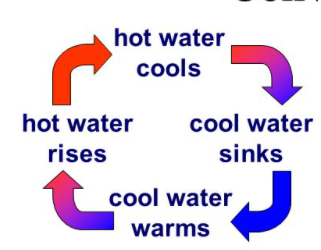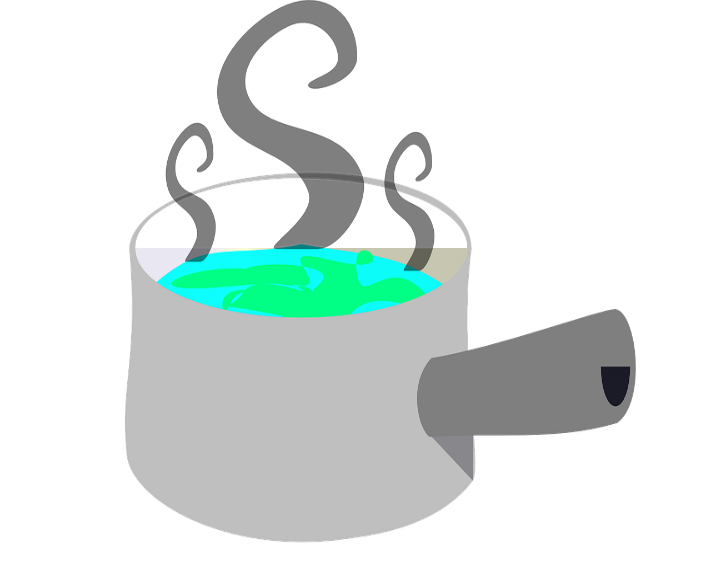
How are convection currents related to density?
Answer
451.8k+ views
1 likes
Hint:
Convection currents, which are also known as density currents arise due to the change in density of a substance. Convection currents are most of the time used only for liquids. Convection currents are also responsible for the movement in earth plates, or also known as tectonic plates due to which earthquakes come.
Complete answer:
Convection currents are related to density and that is why they are also referred to as density currents.
Let’s take an example, while boiling the water the hot water rises up and the cold water moves towards the down side, this is because the cold water is denser than the hot water and due to this change in density convection current arises. We can see this phenomenon in the given figure below.


From this figure we can easily see that the change in density arises the convection currents. The convection currents have a tendency to move fluid or gas particles from one place to another.
Few examples for convection current are boiling of water, change in weather, currents in ocean, Campfires and many more. Even without noticing It we use this phenomenon every day. The hotness we feel while sitting near the campfire is due to the convection currents, so next time you are having a campfire keep this in mind.
Note:
The heat energy is often transferred by the method of convection by the difference occurring in temperature between the 2 parts of the fluid. thanks to this temperature difference, the recent fluids tend to rise, whereas cold fluids tend to sink. This creates a current within the fluid called Convection current.
Convection currents, which are also known as density currents arise due to the change in density of a substance. Convection currents are most of the time used only for liquids. Convection currents are also responsible for the movement in earth plates, or also known as tectonic plates due to which earthquakes come.
Complete answer:
Convection currents are related to density and that is why they are also referred to as density currents.
Let’s take an example, while boiling the water the hot water rises up and the cold water moves towards the down side, this is because the cold water is denser than the hot water and due to this change in density convection current arises. We can see this phenomenon in the given figure below.


From this figure we can easily see that the change in density arises the convection currents. The convection currents have a tendency to move fluid or gas particles from one place to another.
Few examples for convection current are boiling of water, change in weather, currents in ocean, Campfires and many more. Even without noticing It we use this phenomenon every day. The hotness we feel while sitting near the campfire is due to the convection currents, so next time you are having a campfire keep this in mind.
Note:
The heat energy is often transferred by the method of convection by the difference occurring in temperature between the 2 parts of the fluid. thanks to this temperature difference, the recent fluids tend to rise, whereas cold fluids tend to sink. This creates a current within the fluid called Convection current.
Latest Vedantu courses for you
Grade 10 | CBSE | SCHOOL | English
Vedantu 10 CBSE Pro Course - (2025-26)
School Full course for CBSE students
₹37,300 per year
Recently Updated Pages
Master Class 11 Economics: Engaging Questions & Answers for Success

Master Class 11 Business Studies: Engaging Questions & Answers for Success

Master Class 11 Accountancy: Engaging Questions & Answers for Success

Master Class 11 English: Engaging Questions & Answers for Success

Master Class 11 Computer Science: Engaging Questions & Answers for Success

Master Class 11 Maths: Engaging Questions & Answers for Success

Trending doubts
State and prove Bernoullis theorem class 11 physics CBSE

1 ton equals to A 100 kg B 1000 kg C 10 kg D 10000 class 11 physics CBSE

State the laws of reflection of light

One Metric ton is equal to kg A 10000 B 1000 C 100 class 11 physics CBSE

1 Quintal is equal to a 110 kg b 10 kg c 100kg d 1000 class 11 physics CBSE

Difference Between Prokaryotic Cells and Eukaryotic Cells




